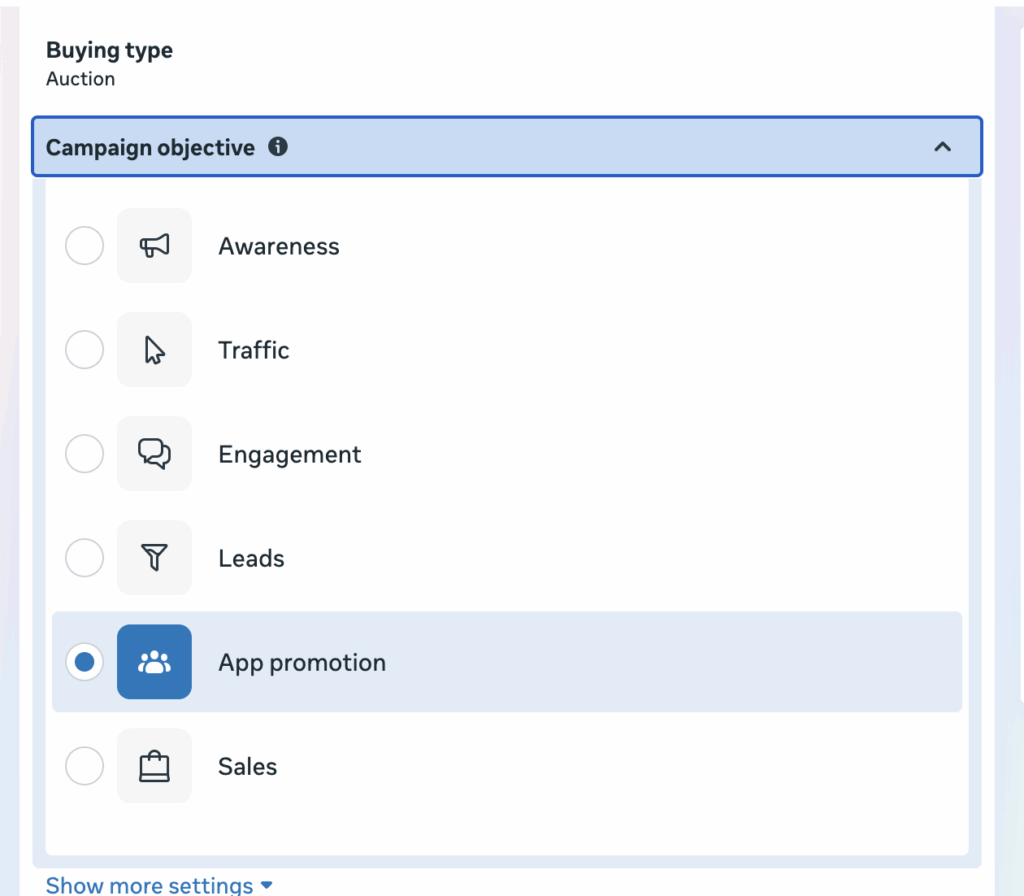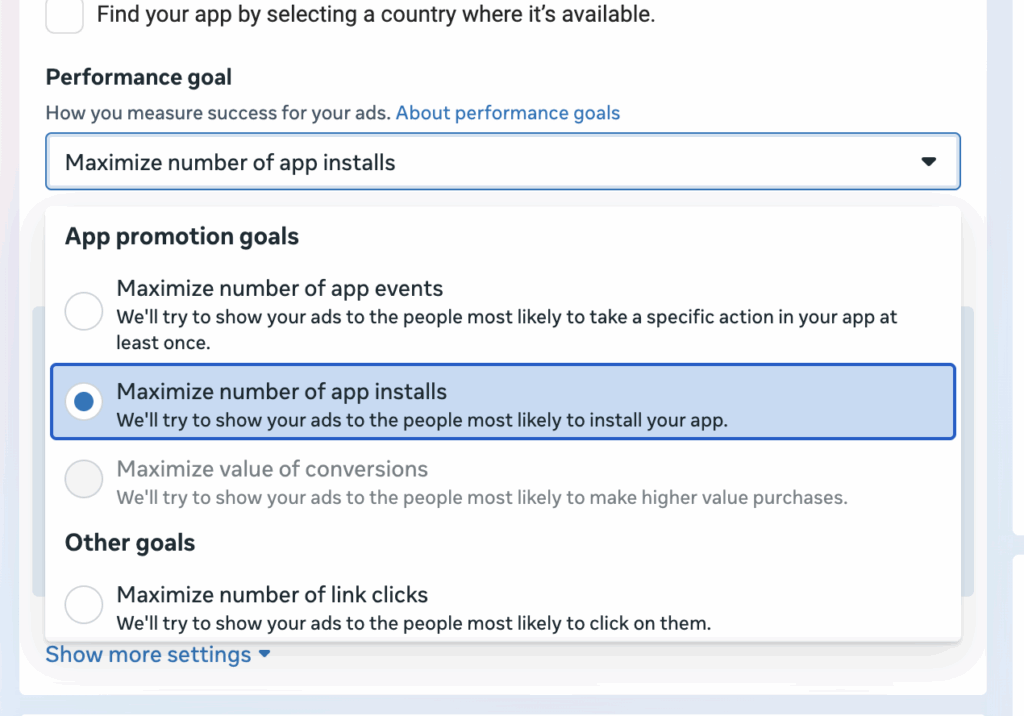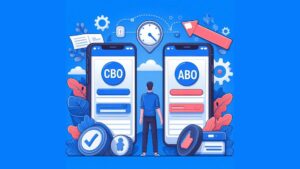- Choosing the Correct Facebook Objective: App Promotion vs. Sales
- The Pros and Cons of the App Promotion Objective
- Choosing the Right Performance Goal: Installs vs App Events
- Why Optimizing for App Events Is a Must
- How to Set Up an App Install Campaign on Facebook (Step-by-Step)
- Best Practices You Can’t Afford to Miss
- Conclusion
Have you ever launched an app and struggled to get meaningful downloads—even after spending money on ads? You’re not alone. For many app founders and mobile marketers, Facebook’s App Promotion campaigns seem like the obvious place to start. And they are—if used correctly. But choosing the right campaign objective and performance goal is just as critical as good creative or budget.
In this guide, we’ll break down how to run a successful app install campaign on Facebook. We’ll walk through the key distinctions between objectives like App Promotion and Sales, how performance goals influence optimization, and the campaign setup strategies that help you scale installs without wasting spend.
Choosing the Correct Facebook Objective: App Promotion vs. Sales
This is where many marketers go wrong right out of the gate. When creating a Facebook ad campaign for your app, the objective you select determines how Meta optimizes delivery and what results you’ll see.
✅ App Promotion Objective (Best for Installs & Engagement)
If your primary goal is to get people to download or use your app, App Promotion is the correct objective.
When you select this objective, Facebook will show your ads to users who are most likely to take action within the app store or app environment—based on your performance goal.
Available performance goals under App Promotion:
- Link Clicks (awareness-stage, low intent)
- App Installs (most commonly used when launching or scaling)
- App Events (like purchases, registrations, or custom events)
- App Retention (less commonly used, but powerful for churn reduction)
🚫 Sales Objective (Not Recommended for App Installs)
While tempting, the Sales objective is not ideal for driving mobile app installs. Sales campaigns optimize for purchases or conversions, but only on websites, not in-app stores or native apps.
Use the Sales objective only if your mobile funnel lives in a browser (e.g., mobile web purchase flow) or if you’re targeting re-engagement through a website experience.
The Pros and Cons of the App Promotion Objective
Now that you’ve chosen App Promotion as your objective, let’s look at the strengths and limitations of using this objective to drive installs.
Pros
- Optimized for installs and app events: Meta can target users more likely to take specific in-app actions.
- Deep integration with mobile MMPs (AppsFlyer, Branch) and Meta SDK
- Performance goals tailor optimization (e.g., install vs. purchase vs. retention)
- Works across iOS and Android
Cons
- Shallow data if SDK is misconfigured: You won’t get true performance unless in-app events are tracked.
- Can prioritize low-quality users if optimizing only for installs.
- SKAN limitations on iOS post-ATT can make early campaigns noisy.
Choosing the Right Performance Goal: Installs vs App Events
While the App Install objective is often the default, that doesn’t mean it’s always the best choice.
When to Use App Installs
- You’re just launching and need to build install volume to train Meta’s algorithm.
- You don’t yet have enough event data (like purchases or registrations) to optimize for deeper metrics.
- You’re targeting a very specific audience segment or geography where install data is still sparse.
When to Use App Events
- You’ve tracked enough in-app actions like registrations, purchases, or subscriptions.
- You want to optimize for value rather than volume.
- You’re ready to move past “vanity metrics” and focus on ROAS or LTV.
Meta’s algorithm performs significantly better when it can optimize for downstream events, so if your SDK is set up and you’ve collected sufficient event data, switching to an event-based objective (like “App Events” or “Value”) will drive better quality users over time.
Why Optimizing for App Events Is a Must
Let’s say your goal is not just installs—but purchases or account creation. Then your optimization needs to reflect that.
Here’s why this matters:
- Event optimization = better retention: Users acquired via deeper event goals are more likely to stay engaged.
- Facebook gets smarter over time: The more event data you feed it, the more efficient your acquisition becomes.
- Lower effective CAC: Even if install costs rise slightly, cost per meaningful action usually falls.
Pro tip: If you don’t have enough events for Meta to optimize efficiently (usually 50+ per week), consider optimizing for “Initiate Checkout” or another upstream event that’s still meaningful.
How to Set Up an App Install Campaign on Facebook (Step-by-Step)
If you’re launching your first app install campaign—or revamping an old one—here’s how to do it right:
- Install the Meta SDK (or use a tool like Firebase or Appsflyer to track events).
- Connect your app to Events Manager in Meta Business Suite.
- Choose the App Install objective when creating your campaign.

- Set your budget (start with at least $50–$100/day for learning phase purposes).
- Use Advantage+ placements to allow Meta to optimize across placements.
- Segment ad sets by OS (iOS/Android) only if your value or funnel is drastically different by platform.
- Upload multiple creatives (video > static, test 3–5 versions minimum).
- Set your optimization event (start with installs, then shift to registrations, purchases, etc.).

- Monitor learning phase—don’t make changes too early. Wait until at least 50 events have occurred.
- Review and iterate weekly using install-to-event metrics (e.g., % install-to-purchase).
Best Practices You Can’t Afford to Miss
Running an app install campaign successfully isn’t just about setup. It’s about ongoing strategy. Here are some rules to live by:
- Let campaigns exit the learning phase: Avoid pausing early or making daily edits.
- Optimize for retention and value: Installs are step one. ROAS is the goal.
- Use SKAdNetwork (for iOS) if running campaigns post-ATT. Without it, tracking and optimization will suffer.
- Invest in creative refreshes every 7–14 days. Fatigue kills performance.
- Track blended ROAS across both paid and organic to get a full picture.
- Retarget smartly: Use App Events to retarget churned users or cart abandoners.
- Don’t go too narrow on targeting early on. Let Meta find your best converters.
Conclusion
Facebook App Install campaigns are still a powerful tool for driving mobile growth—but only if done right. The most successful campaigns go beyond driving download numbers and instead focus on building meaningful user relationships that translate to real revenue.
Start by understanding when to use the App Install objective, and when to evolve into App Event optimization. Build a deep creative testing muscle. Optimize for real in-app actions, not just volume. And be patient—allow campaigns to learn and improve over time.
App installs are the first milestone. But your north star should always be long-term value.



